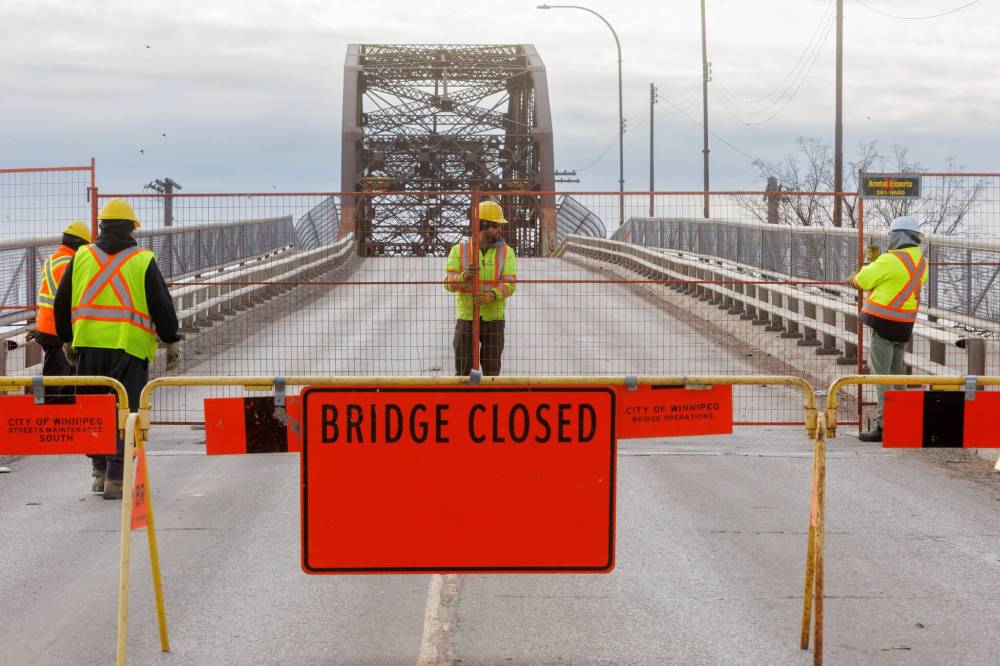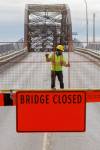Sprawling city needs more than a new bridge to connect us
Advertisement
Read this article for free:
or
Already have an account? Log in here »
To continue reading, please subscribe:
Monthly Digital Subscription
$0 for the first 4 weeks*
- Enjoy unlimited reading on winnipegfreepress.com
- Read the E-Edition, our digital replica newspaper
- Access News Break, our award-winning app
- Play interactive puzzles
*No charge for 4 weeks then price increases to the regular rate of $19.00 plus GST every four weeks. Offer available to new and qualified returning subscribers only. Cancel any time.
Monthly Digital Subscription
$4.75/week*
- Enjoy unlimited reading on winnipegfreepress.com
- Read the E-Edition, our digital replica newspaper
- Access News Break, our award-winning app
- Play interactive puzzles
*Billed as $19 plus GST every four weeks. Cancel any time.
To continue reading, please subscribe:
Add Free Press access to your Brandon Sun subscription for only an additional
$1 for the first 4 weeks*
*Your next subscription payment will increase by $1.00 and you will be charged $16.99 plus GST for four weeks. After four weeks, your payment will increase to $23.99 plus GST every four weeks.
Read unlimited articles for free today:
or
Already have an account? Log in here »
Hey there, time traveller!
This article was published 02/12/2023 (731 days ago), so information in it may no longer be current.
One day a few years ago, tired of the well-beaten path between our fenced yards via the back lane, we teamed up with the next-door neighbours and installed a gate between the properties.
We had become close friends over the years and, sitting around a backyard fire one night, discussed the merit of digging a warm underground tunnel or installing a Portage Place-esque skywalk between the houses. In the end we decided the gate would be the best option, though, disappointingly, the least silly.
We’ve all done things like this. We grow tired of workarounds and invent better ways of getting what we need. We consider ways to solve a problem and pick the best one.

City crews install barriers on the north end of the Arlington Street Bridge. (Mike Deal / Winnipeg Free Press files)
Winnipeggers, especially, are well adapted to encountering barriers between ourselves and where we want to be.
Founded on land nestled among two rivers and several creeks, we have used skis, canoes, snowshoes, ferries and bridges to get us where we need to go.
It is strange then, perhaps, that in building our city we’ve chosen over and over again to add even more barriers, both physical and organizational, to being able to get anywhere.
The Weston rail shops have kept the North End residents hemmed in for decades, allowing only a controlled trickle to the south side of the tracks via three insufficient passageways. With the indefinite (and long, long overdue) closure of the Arlington Bridge, another gate has been shut on mobility in our city.
We are right to be angry about deferring this problem until it couldn’t be solved in a reasonable time frame. We are correct to identify the wilful ignorance of the necessity of this passage through town. And the blame for our current predicament is correctly assigned to many, and over many years:
The problem is the rail yard is inconveniently located and too expensive and bureaucratically fraught to move.
The problem is the bridge should have been replaced 50 years ago.
The problem is we simply don’t have enough crossings to serve the daily traffic flowing over the rail lines.
The problem is too many cars to begin with.
The problem is the lack of reliable transit service.
The problem is we built too many roads and bridges and now can’t afford the upkeep.
The problem is we diverted too much money to infrastructure problems in more affluent areas of the city.
The problem is an unwillingness to be proactive.
The problem is low voter turnout.
The problem is we’re broke.
The problem is no one cares about the North End anyway.
The problem is city council is short-sighted.
Truly, the heart of this embarrassing and tragic failure of civic responsibility is that we haven’t built the metaphorical bridges we needed in order to sustain this physical one.
The heart of this embarrassing and tragic failure of civic responsibility is that we haven’t built the metaphorical bridges we needed in order to sustain this physical one.
We have had decades of barriers we’ve refused to find solutions for and instead told one another “just go around.” But “just go around” means we’ve become accustomed to viewing the solution to the problem as a bigger problem than the actual problem ever was.
We have not had city planners who have created a unified, connected city where we have opportunities to encounter and celebrate one another in the course of daily living.
We have not had fair and equitable taxation systems.
We have not created shared spaces, such as aboard a robust and efficient public transit system, where people from all walks of life may have moments of interaction, and therefore, understanding.
We have not created systemic solutions to provide a variety of housing and businesses in every neighbourhood.
In short, we have not given people reasons or resources to travel to other parts of this sprawling city. We are, in the process, reversing the vision of Unicity, creating a disorganized collection of boroughs, which will be hard pressed to attract a sustainable level of culture and revenue growth.
We’re as seized up as the beams of the Arlington Bridge, and our lack of flexibility may be our downfall.
Recognizing and solving a “go around,” such as putting a gate in a fence, means, perhaps, a bit of work, and probably some decisions about putting off other projects for the benefit of neighbours and neighbourly relations.
We are a city retreating into the suburbs, watching real, physical pathways throughout our beautiful and promising historic city falter and fail under the corrosive forces of distributed incompetence and absent planning.
In building none of these intra-city metaphorical bridges, gates or tunnels, we are a city retreating into the suburbs, watching real, physical pathways throughout our beautiful and promising historic city falter and fail under the corrosive forces of distributed incompetence and absent planning.
Winnipeg is a vibrant and diverse place to live; a place worth getting to know if given reason and means to explore.
Recognizing these systems that hold us back, and devising ways to remove, alter, tunnel under or soar over them is what will make Winnipeg a city that will attract problem-solvers, dreamers and bridge-builders of every stripe to actually get us where we need to go.
rebecca.chambers@freepress.mb.ca

Rebecca explores what it means to be a Winnipegger by layering experiences and reactions to current events upon our unique and sometimes contentious history and culture. Her column appears alternating Saturdays.
Our newsroom depends on a growing audience of readers to power our journalism. If you are not a paid reader, please consider becoming a subscriber.
Our newsroom depends on its audience of readers to power our journalism. Thank you for your support.










